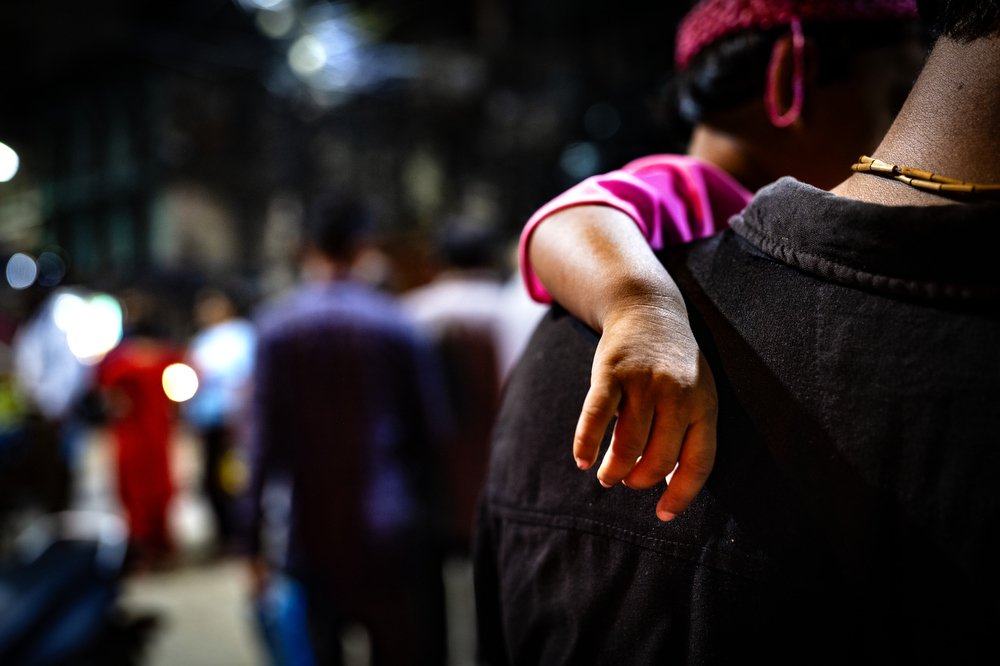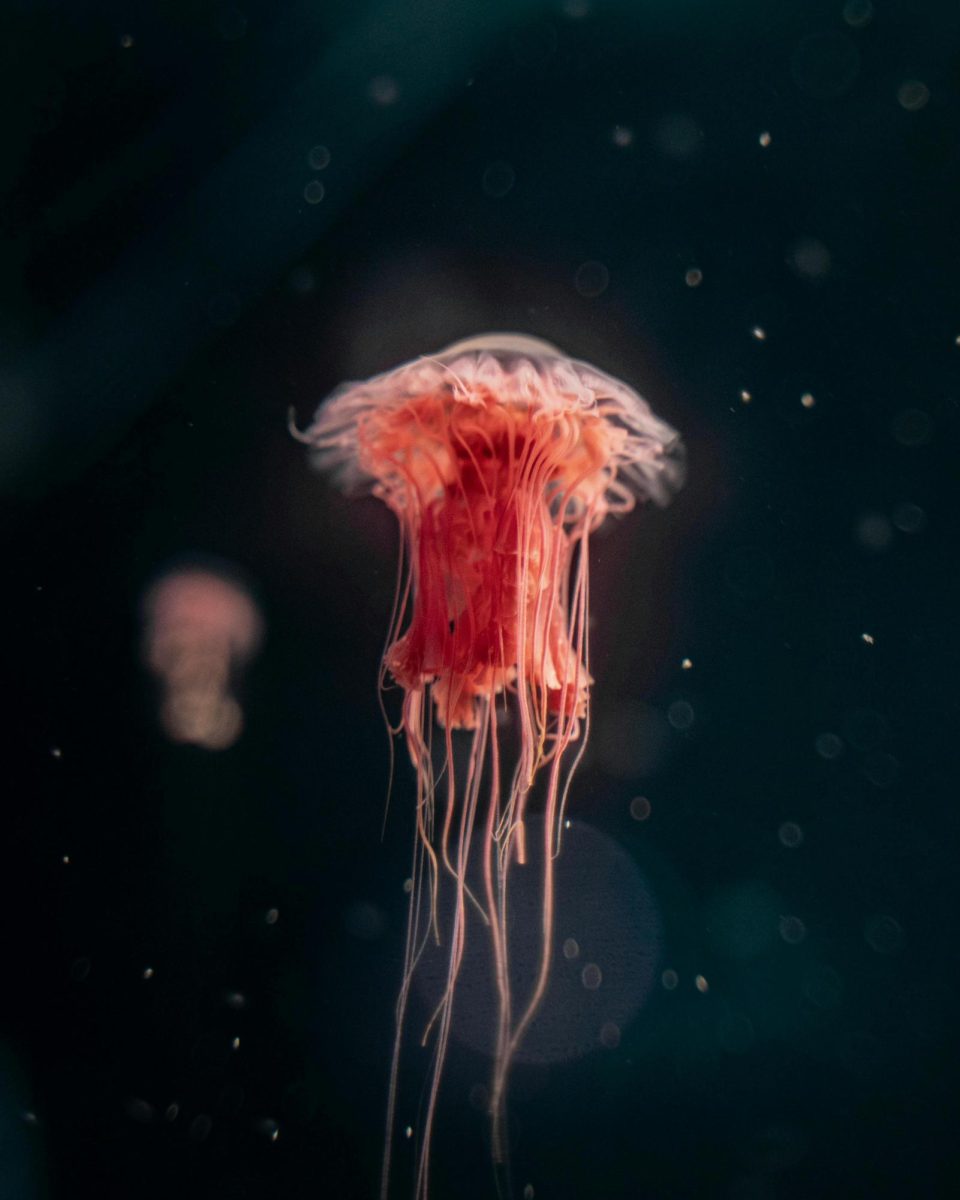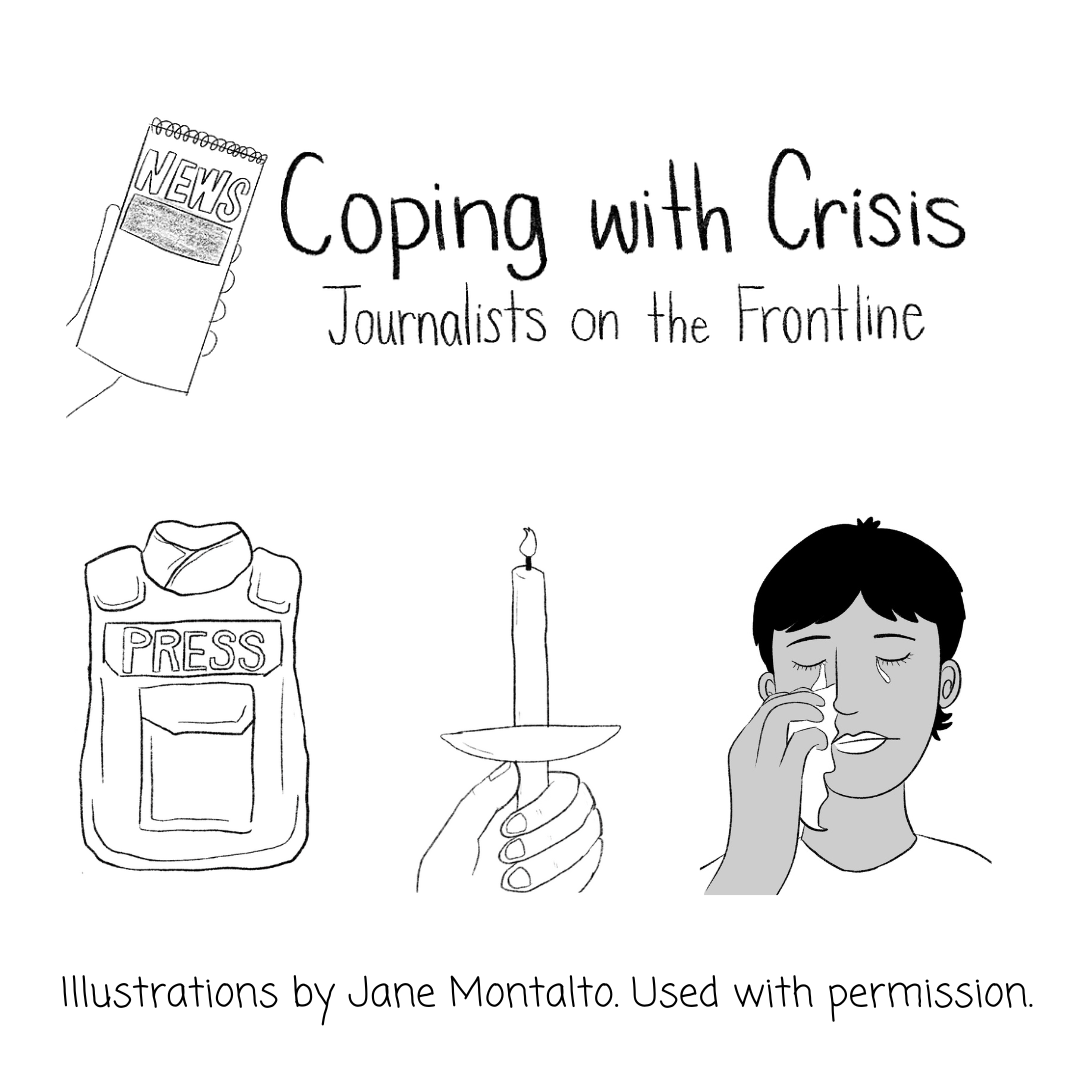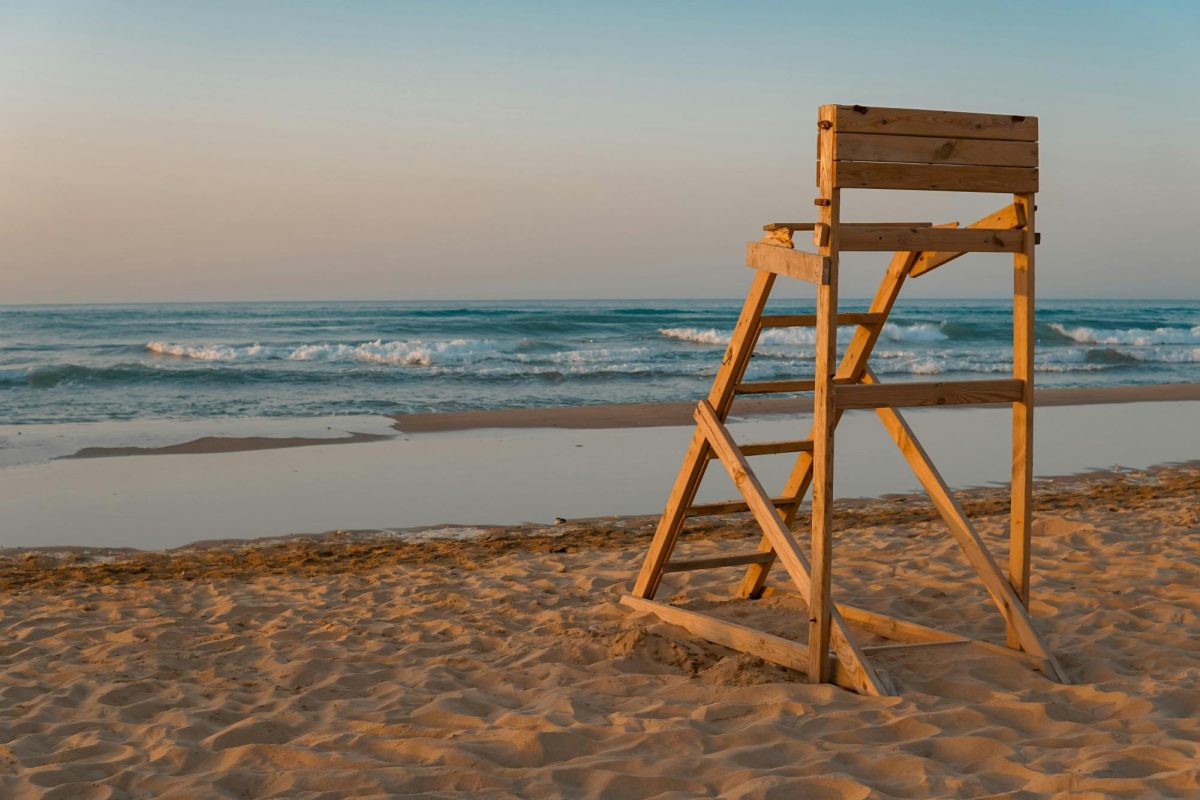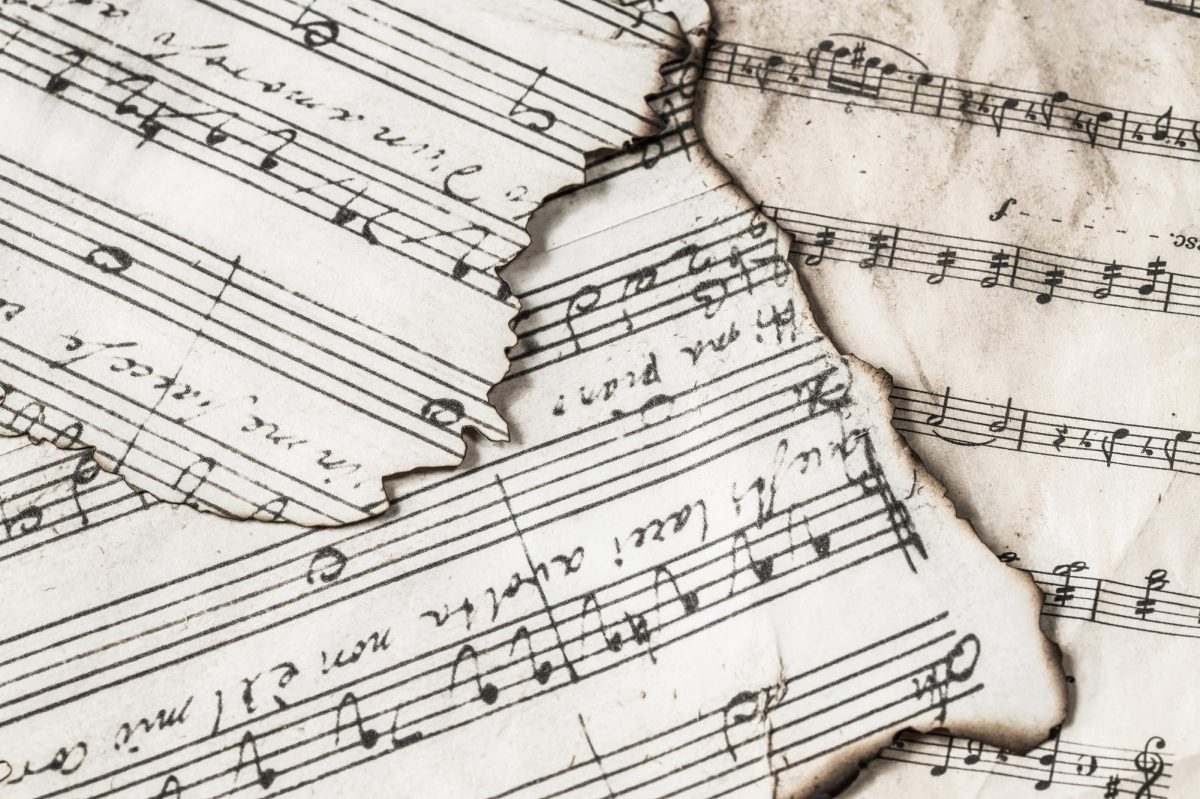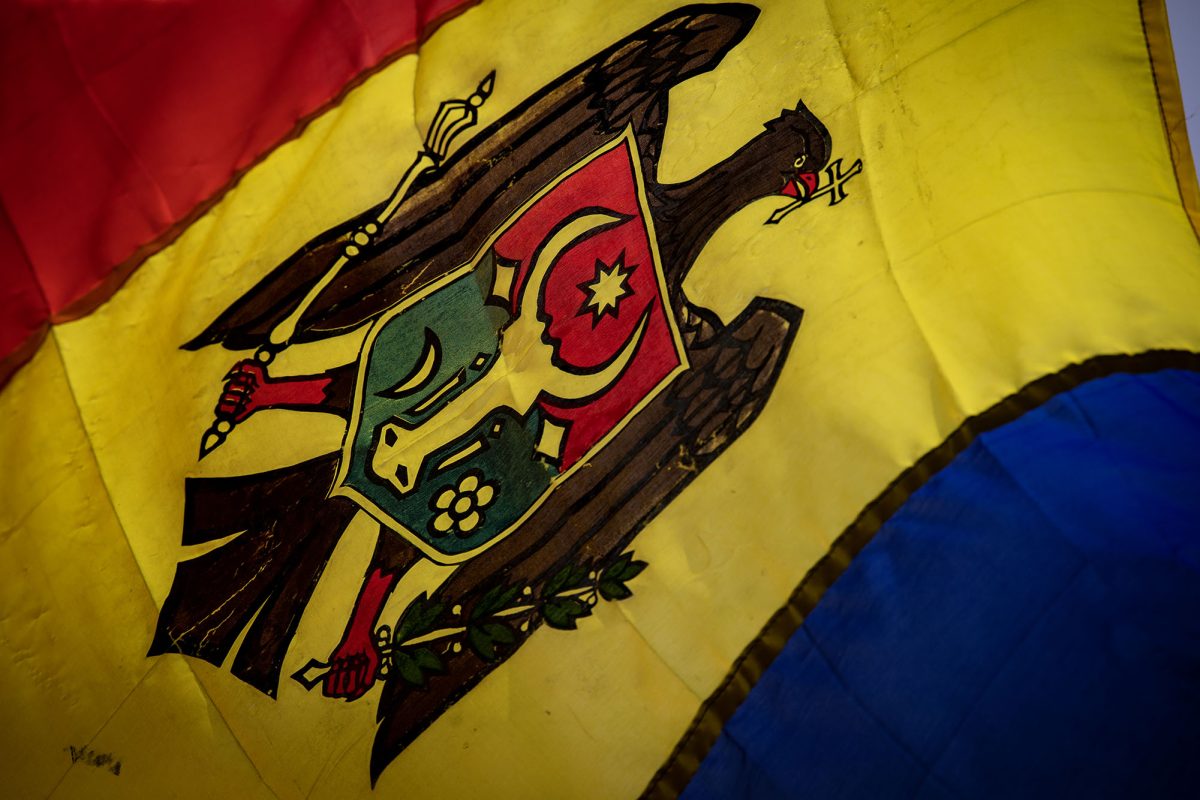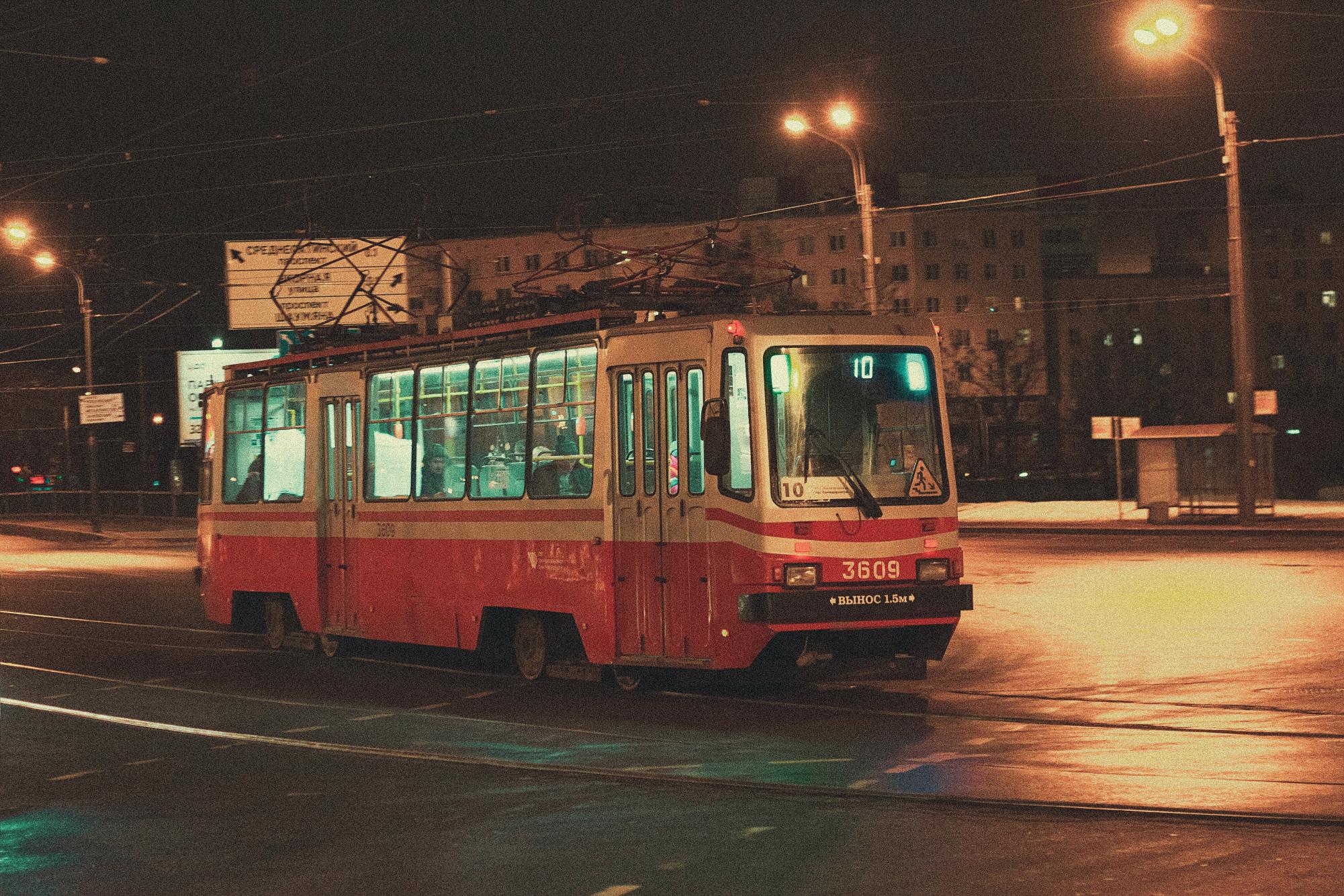
Last summer, two American tourists spent their train ride from Moscow to St. Petersburg declining all food offered to them.
It wasn’t that they weren’t hungry; they feared being poisoned.
The Cold War may have ended more than 20 years ago, but its memory lives on among many Americans, coloring how they view Russia in the 21st Century. This lingering fear, bolstered by the 5,000 miles separating the two former superpowers, distorts Americans’ ability to see Russia and Russians as they really are today.

Never mind, for example, that Russia’s homicide rate, once the highest in the world, has plummeted 50 percent since 2003. Or that its stores are once again filled with food and brand-name clothing from around the world. Many Americans still see Russia as a dangerous, impoverished place teetering on the brink of collapse.
The train-riding couple who feared to eat was also told to put a wet towel under their train compartment door in case of poisonous gas. In addition, the wife had her wedding ring cut off so that no Russian would sever her hand to steal her ring.
Natasha Emelianova, a native of St. Petersburg, who worked with the husband and wife, has been a tour guide for the past nine years. She said she gets a similar reaction from many of her clients: overly cautious, based on out-of-date information.
These stories are funny, but what they represent isn’t: the fear gripping a generation of Americans who lived during the time of the Soviet Union.
“It seems a little sketchy, but it’s really not,” said Polina Malamud, a junior at Stony Brook University.
Malamud has been studying at St. Petersburg State University for the past three weeks and making the most out of both daytime and nighttime in the city.

She said she remembers one particular time when she was out late at a dance and had to wait for the bridges to go back down in order to get to her dorm room. She was walking with a guy from the dance who also had to get across the bridge.
“He flagged a cab for me,” she said. “It was like five in the morning, so I was half asleep, and I was perfectly safe.”
But this is not to say that precautions should not be taken while walking in the city, explained Siobhan Cassidy, another Stony Brook University junior studying abroad at St. Petersburg State University.
“You’re on edge and making sure no one is following you, but you’re like that, or should be like that, anywhere you go,” said Cassidy.
Emelianova explained that it is only when someone sees Russia for herself that she can start to understand what kind of place it is and what safety precautions should be taken.
She said it’s simple: “The more you travel to Russia, the more you know.”
A recent showing of the Oscar-winning documentary “Inside Job” at a St. Petersburg University international summer program sparked an intense debate between the Russians in attendance about their own system of banking and government.
About 20 students from many different countries attended the showing of “Inside Job” and some of them embraced the film’s call for financial reform, though they applied it to their country. In contrast, an economics professor scoffed at the idea that Russia’s corrupt government could ever be reformed. This debate is typical of those between younger and older generations.
“Inside Job” depicts Americans recent financial collapse and places the blame largely on greedy bankers. It’s a story particularly relevant in Russia today. Earlier this month, the Russian government had to infuse The Bank of Moscow with $14.1 billion to save it from insolvency. The bank got into trouble the same way as some of its American counterparts: Making questionable, and sometimes fraudulent, loans, some of which were to Russian insiders who never intended to repay the money.
Many students at the event feared that Russia would wind up as America was portrayed in the film: free of any reform that would curb the power of a few bankers over the economy. This fear is prevalent among the educated youth of Russia.
Not all agreed. Economics Professor Nikita Maslennikov, who has traveled and spoken widely in the West, attacked the film as “naive, rubbish” and “propaganda.” He criticized the director for making members of the American congress “look like the good guys.”
Maslennikov then changed the topic of conversation to Russia. He said, “I think it’s even worse here. At least in the U.S., the money is going to bankers,” said the self-described libertarian, but who sounds more like an independent who embraces Keynesian economics. “The state will steal more than the market. Russia is proof.”
Maslennikov doubts that things will improve in Russia anytime soon. Greed, he said, was human nature, and those in power would succumb to greed.
“I don’t see that (Russian Prime Minister) Putin is working towards the future of Russia,” he said in a later conversation.
Some of the Russians objected to Maslennikov’s characterization of Russia.
“Are you saying social guarantees are bad,” asked student Ilya Khvorostukhin, referring to Maslennikov’s anti-government attitude. “Are you suggesting that we grind up the poor and eat them?”
Khvorostukhin and other members of the audience pointed to Scandinavian countries as proof that social programs could help to eliminate the poverty common in rural areas in Russia.
Other students in the audience reacted strongly to Maslennikov’s idea that reform is impossible.
“Just because it is, does it mean that it should be so?” asked student Maria Kochkina. “The film is trying to encourage us to be more careful with our financial system.” She added that she will now pay closer attention to anyone talking to her about numbers.
The students and the professor also disagreed on how the government and economists should act in response to bank fraud. During the film, both groups had been criticized as complacent in America’s financial crisis.
Maslennikov said he felt “no sympathy for that nice Latina woman” in the film, who was confused by a mortgage deal offered to her in a language she did not speak.
“I don’t like the stupid people as well, but the government should protect them,” said student Dmitry Mordvinov. He questioned whether Maslennikov’s cynicism was proper. “We have economists to protect us and warn us, not to say it will always be that way,” he said. “‘Oh, shit happens’ is the wrong attitude.”
More than 20 years after an epic struggle, he finds harmony in the same place: his paintings.
Aslangery Uyanayev was part of a group of artists who squatted at Pushkinskaya 10 in St. Petersburg, Russia, to demonstrate the power of art during a time of tyranny. Today, he lives in the same place, with scuffed floors beneath dried-out brushes, plastic dishes of muddy water and canvases covered with vivid, chaotic paint strokes.
In 1991, Uyanayev joined with other protesting painters, musicians and writers at the end of the communist era (when many artists and art forms were restricted). As the chaos of a transforming country grew around them, the group’s aim was to establish an independent cultural center. They ended up doing much more. The artists’ work, including many informal concerts and art shows, formed a type of protective buffer between them and the tumultuous times in which they lived.
“We moved into the house with the world collapsing around us,” said Uyanayev.

Russia’s history is marked by wars, revolutions and corrupt regimes, but it continues to produce world-renowned artists, from 20th century composer Igor Stravinsky to 19th century realist writer Fyodor Dostoyevsky to poet Alexander Pushkin. How can life be disrupted but never art?
“There is a point of view that all these achievements in the arts and literature and music are related to the absence of political freedoms,” said St. Petersburg State University student Nikolai Vokuev.
“When you have no political freedoms, you search for freedoms somewhere else and you find it in the cultural things.”
After Ivan the Terrible gained power and Russia officially became a nation, tsarist regimes reigned. It took a revolution in 1917 and the execution of Tsar Nicholas II and his family for Russia’s communist government to take control. Seventy-six years later, Russia’s current government, which calls itself a “managed democracy,” took power.
Throughout this often violent turbulence, Russian artists were both persecuted and used as puppets by the government. In both cases, creativity flourished.
No Russian artist’s life better represents this tumultuous cycle than Dostoyevsky’s. Before writing “Crime and Punishment” in 1866, Dostoyevsky’s life was full of hardship. His mother, father, wife and brother died. He endured four years in a Siberian prison camp for his participation in a liberal group called Petrashevsky Circle and was then forced to spend more than four years as a soldier in Semipalatinsk. All of this happened before he turned 45.
Dostoevsky used fictional realism to depict the hardships of life and the ethical questions that every human faces. His candid novels have made this St. Petersburg resident one of the most world-renowned Russian writers.
“It’s difficult to imagine how people manage to live in these kinds of climates or regimes,” said 23-year-old Moscow student Ivan Fomin. “The only way for a person to survive here is to create some alternative reality.”
Fomin, originally from Omsk, Siberia, cited the Soviet Union era as an example. “It seemed to be such a huge and cruel machine,” he said. “You just had to imagine things to somehow deal with this fear, with this depression embroiled by this regime.”
L.D. Raigorodski is an example. He graduated from college at the height of the Soviet Union’s reign. While his interests were in science and art, he became a professor straight out of college. Whether he did this because it was the only way to finish his degree or because he was manipulated by the Soviet Union isn’t the point. Forty-five years later, he is still teaching – his personal legacy from the Soviet era.
But it is Raigorodski’s handmade clocks, which he has been working on for 35 years, that seem to provide the clearest glimpse into his soul.
One, titled “The Ties of Time,” depicts a man hanging by his neck behind an executioner who kills a woman with his ax every hour. While explaining the work, Raigorodski said, “We all are the prisoners of our time.”
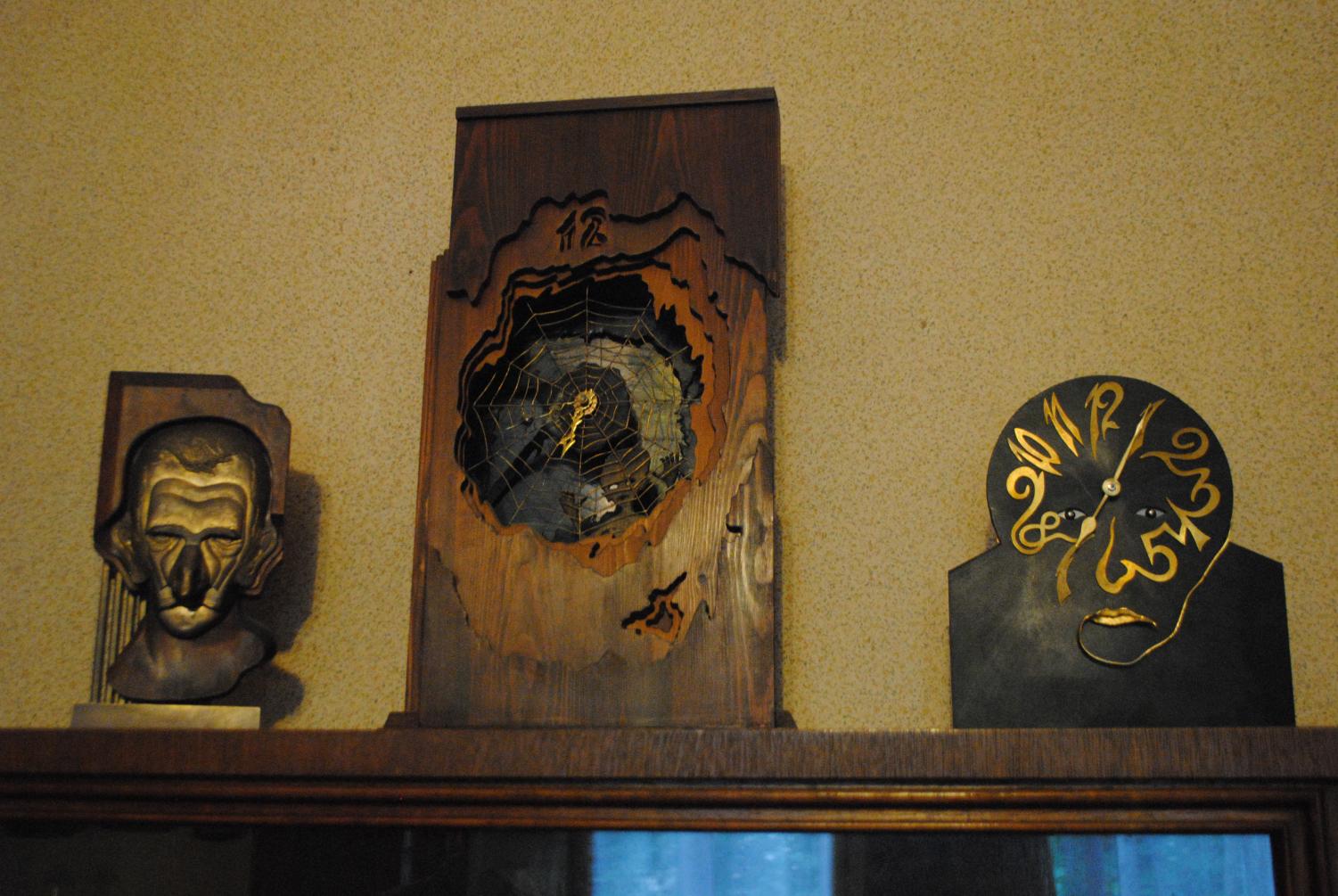
Another work, “The Prayer,” features a twisted man on all fours, screaming at a giant clock. “We wanted to make clocks that would not only display time, but also would show its characteristics,” said Raigorodski in his recent book, “The Images of Time.”
It wasn’t until the end of the 20th century that the communist regime, which many believed would never collapse, fell. A new constitution was ratified in 1993, establishing the Russian Federation.
While comprised of an elected president who appoints a prime minister, and two governing bodies (similar to the United States’ Senate and House of Representatives), the Federation is not the democratic system it appears to be. “Most of the oligarchs live abroad or have children studying abroad, or have outside bank accounts,” said Nikita Maslennikov, an economics professor from St. Petersburg. “It’s like an outside force is ruling the country.”
Leaving Russia is exactly what 15-year-old violinist Olja Voronenko plans to do. Until then, she will continue to use her violin as a release from a public education that ranged from abusive to indifferent.
“My first teacher in my usual school was very crazy,” said Voronenko. “She was shouting at people and even beating some of them. I was really afraid at that time and didn’t want to go to school for several years.”
When she was eight years old and in her third year at school, she began to study violin. By the time she went on to the next level of education, Voronenko’s teachers were more concerned with results than their students.

Now Voronenko, part of the next generation of Russian artists, is in a new school that entails only once-a-week private academic lessons. She has won three important music competitions, two for violin and one for her composition.
Although isolated from her peers, she fills her time with what she loves most, the violin. She plans to continue to put her energy into her music, which has the power to take her out of her environment – both physically and mentally.

